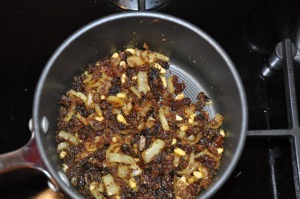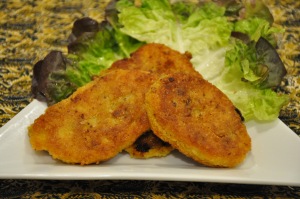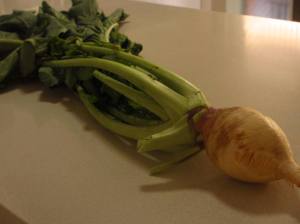It’s very cool when your 11 year old comes to you and you brainstorm a Personal Interest Project. My son is very interested in technology so we thought creating an APP would be a good personal interest project and of course I had to put my eco-mummy twist on it, so the APP became about how to create a waste free life.
My son researched and wrote the content for the APP and spent afternoons with my brothers putting it into code. I thought ;d share his insights – so today, he is my guest blogger!
Live Waste Free
Waste is responsible for 3% of global carbon emissions (https://www.c2es.org/content/international-emissions/), releasing methane which is a stronger greenhouse gas than Carbon dioxide. There is so much that we can do to eliminate this – and I’m here to show you how you can live a waste free life to help save out planet!
About our waste

Food waste

What is it?
Food waste is food that is thrown out, lost or uneaten. It makes up over half of all waste disposed of at landfill. Wasting food is not only bad for the environment, but its also bad for your hip pocket. Australians throw out around $3,500 worth of food every year!
Want to have zero food waste?
- There’s so much you can do to avoid food waste. Here are my tips:
- Buy only what you’re going to eat! People buy too much food and it goes off – better not buy too much. Take a list and stick to it 🙂
- If you do buy food and it starts to go funny, there are recipes that will help you use it up instead of throwing it out. Check out: https://foodwastefeast.com/recipes/ for some ideas.
- Store your food properly. You can freeze things like bananas and berries and make shakes for example. Store thing in air tight containers to keep them longer.
Also check out these websites to find out more about avoiding food waste and take the zero food waste challenge:
- https://www.ozharvest.org
- https://www.cropswapapp.com (a food swap community)
Recycle
Once you’ve done what you can to avoid and use up all your food, anything left over should be put in a worm farm. Luckily, you can make this yourself at home: LINK
Plastic

What is it?
Plastic is a really useful product. It’s light, flexible and doesn’t break. The problem though is that a lot gets thrown out and ends up in our oceans, rivers, streams and bushland which causes pollution.
Australians love plastic so much that we use more than 10 million plastic bags a day and over 85% of soft plastics ends up in landfill!
Thankfully there are so many things that we can do to reduce our use of plastic.
Want to have zero plastic waste?
- Firstly you should avoid plastic by using a reusable water bottle; and taking your own containers and bags to fill up at the supermarket;
- Use beeswax wraps or lunch boxes instead of cling wrap for your lunch;
- Where you can, reuse your bags and containers as much as you can; and
- Take your soft plastic waste (wrappers, bags etc) to the supermarket for recycling (like some Coles and Woolworths stores accept this).
Check out these websites for more information and take the zero plastic waste challenge!
- https://www.plasticfreejuly.org/
- https://www.google.com/maps/search/return+and+earn+near+me/@-33.9066192,150.9445733,11z/data=!3m1!4b1
- https://boomerangbags.org/
Paper and cardboard
What is it?
Paper and cardboard are made of trees. It also uses water and energy to produce. In fact, Australians use around 230 Kg of paper each year (https://waster.com.au/recycling-facts-australia/). Luckily Paper and cardboard waste should really be a thing of the past. Here’ what you can do:
- Avoid using paper – work on line, double side print and where you do have waste, use the paper as scrap paper;
- Recycling paper can have loads of other benefits too. Recycling 1 tonne of paper saves: 13 trees, 2.5 barrels of oil, 4m3 of landfill, 31,780 litres of water and 4,100 kilowatts of electricity.
Here are some other tips:
- Make your own paper using recycled paper: https://www.wikihow.com/Reuse-Paper
- Close the loop and buy recycled products: http://www.whogivesacrap.org/Indiegogo/
Garden waste

What is it?
My family has a big garden, so all the leaves, the grass clipping and trimmed branches created garden waste. When this ends up in landfill it creates methane which is a greenhouse gas. Garden waste though can easily be returned back to the garden as mulch or compost.
Here are some ways that you can have zero garden waste:
- Compost, compost, compost! here is how you can make your own compost bin: Compost
Electronic waste

I’m really excited because I just got my first mobile phone and for school will get my first laptop. While I’m excited, I’m also aware that electronic waste is a really big problem. In Australia, there are more unused phones than people in Australia and unfortunately we only recycle about 10% of our old phones.
Unfortunately a lot of electronic waste ends up in poorer countries like Uganda, China and India where people including children go through them to get out precious metals. These areas become really polluted and it affects people’s health.
Electronic waste can also include other things like TVs, printers, DVD players, fridges and other electronic appliances.
What can you do?
- Think twice before buying electronics. Do you really need the latest phone or laptop?
- Donate – but please don;t dump. There are charities that will accept electronics in good condition;
- Sell it – Gumtree and Freecycle are a good place to start;
- Repair it – find a mobile or electronic repair centre near you;
- Recycle: Contact your council to find out if they take electronic waste or find a drop off spot for your old electronics: https://techcollect.com.au/;
- Take it back to the maunfacturer. Some manufacturers have a free return service. Call yours to find out.
So as you start the new year – remember to take the zero waste challenge and help save the planet.
By JayBro


















